Saturday morning, Rex Buchanan and Bob Sawin of the Kansas Geological Survey led about 30 people on a geology hike at the Tallgrass Prairie National Preserve near Strong City.
Rex Buchanan is the associate director for public outreach for the Kansas Geological Survey; Bob Sawin is a research associate for the geology extension. The KGS is located at the
Both men are familiar with the Tallgrass Prairie National Preserve. They’ve spent time here and have walked this land, researching natural springs.
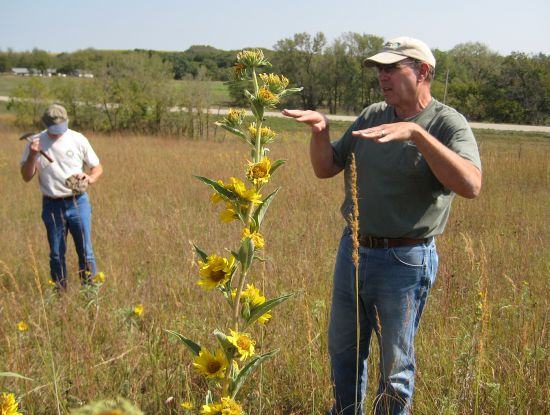
Rex Buchanan grabs a piece of Eiss limestone from the pasture as Bob Sawin talks to the group about stratigraphy, the layering of geologic units.
Layers of limestone on the Preserve include Cottonwood, Morrill, Middleburg, Threemile and Florence. Geologic terms are traditionally named after locations rather than people.
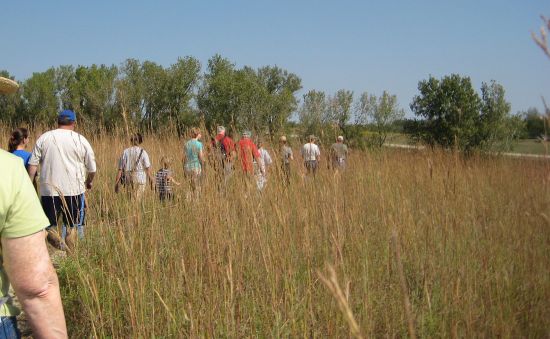
On the Southwind Trail, we hiked through Indian grass, switch grass and big bluestem.
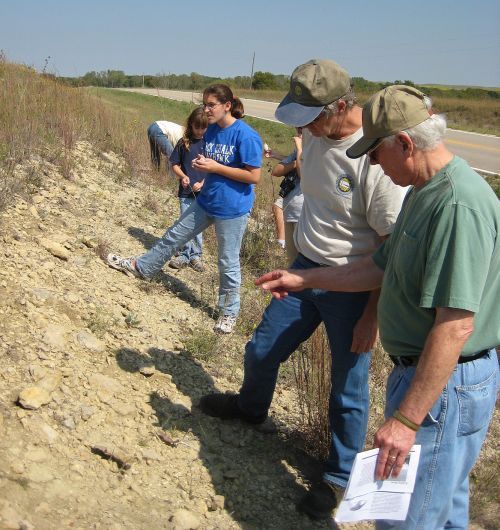
In the ditch on K-DOT right-of-way, we looked through the road-cut for fossils in the limestone. Collecting rocks and anything else is not allowed on the Preserve itself.
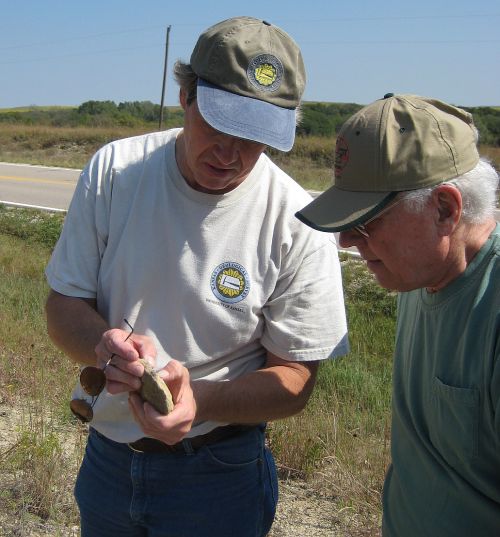
Rex Buchanan points out a brachiopod fossil.
Limestone was formed from organic matter, aquatic plants and organisms that lived here when Kansas was covered by oceans millions of years ago. Much of Kansas was underwater, off and on, during the Pennsylvanian and Permian periods (approx. 250-300 million years ago.)
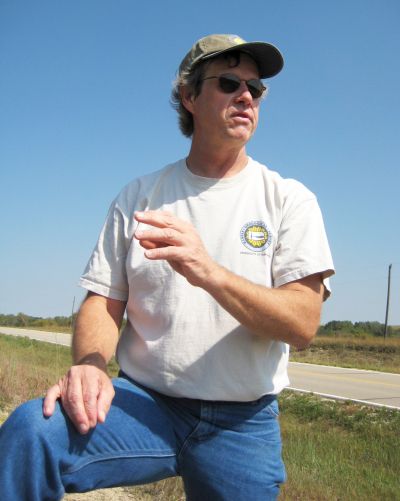
Types of limestone vary across the state. Rex mentioned the orangey-colored fencepost limestone that is quarried in western Kansas. “If you see that, you know it didn’t come from here.”
That is a younger type of limestone, formed during the Cretaceous period (about 65 million years ago.)
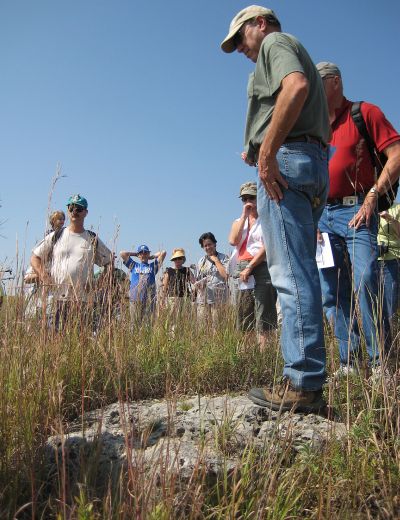
Bob Sawin stands on a piece of Eiss limestone. “One of the characteristics of Eiss limestone,” he said, “is when it weathers, it gets real vuggy like that, it gets a lot of holes in it.”
When they took core samples of the stones below the surface, the samples showed that “these rocks were full of gypsum, which is real soluble, and that explains the holes.”
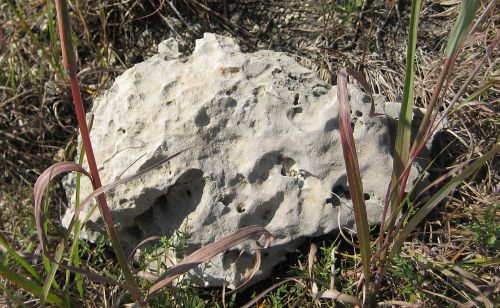
Eiss limestone.
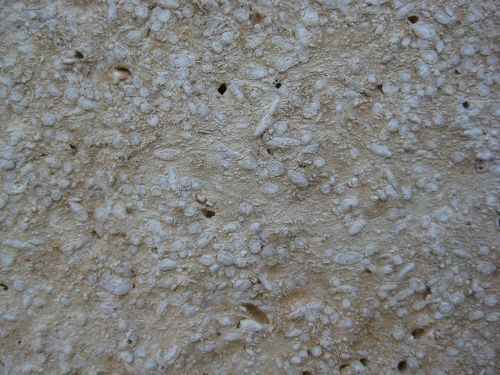
Above is Cottonwood limestone. It’s a photo of a stone in the house at the Tallgrass Preserve. The wheat-shaped fossils are fusulinids, one-celled marine organisms that are preserved in the stone. These are diagnostic fossils that help to date the rock and distinguish it from other types of limestone.
What I learned on the hike has given me a better feel for the stacked history of this land and a sense of the many clues hidden within the rocks. Fascinating stuff.
Just imagine- you were walking on what was the bottom of the sea!
And if you’d stayed there, you’d have been buried in sediment and turned into a fossil!
Love the close-up of the Cottonwood. It’s one of my favorite building stones _ever_. It’s the stone used for the Chase County Court House, the base of Plumb Hall, and First Presbyterian Church in Emporia, among other locations. I love the little football-shaped fusulinids.